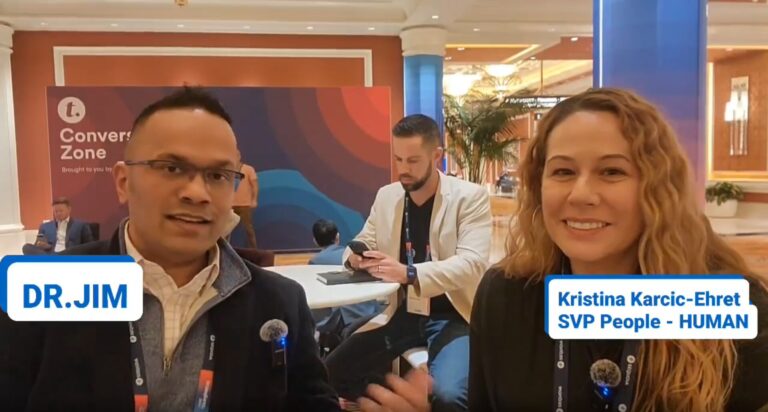As someone who is on the border between Gen X and Millennials, I share experiences with both generations. While I had freedom, it wasn’t as extensive as the freedom Gen X enjoyed. My parents were knowledgeable and there were parameters, though they were not helicopter parents. Yet, similar to most Gen Xers, it’s a mystery how my siblings and I survived. Technology, though ancient to some, rapidly evolved and was never a foreign concept to me. In summary, I share experiences with both Gen X and Millennials; my generation is known as Xennials.
With that said, as soon as I entered the workforce, the buzz was all about Millennials, often not in a good way. We generalized an entire generation and were frustrated by any little thing. Now, it’s quite funny to see Millennials doing the same thing to Gen Z, calling out almost the same behaviors and challenges that we generalized when Millennials entered the workforce. To be honest, it’s quite comical.
The truth is, you can’t generalize an entire generation. There are so many variations, depending on many factors. Additionally, as our world becomes more complex, so do our personalities. As a mom of two Gen Z sons, I see how different they are from each other and how they don’t fit the generational stereotypes. We are not even talking about the differences in culture and socioeconomic status that are not reflected in those generalizations.
We are missing the mark by not discussing what is truly important. When it comes to workplace environments, are we really that different? Most of us want to be fairly compensated, have a fair chance at success, and work for a company that has integrity and treats people well. We are more alike than we think. What should we be talking about that we aren’t? The common factors that have put this generation at a disadvantage. This is the generation that experienced excessive use of cell phones, iPads, gaming consoles, etc. They collectively experienced a worldwide pandemic that for many robbed them of critical learning and development of social skills. This generation has had access to information that many of us wish they didn’t have at such a young age. Their lives play out in real-time on social media, which in many senses has defined their world. We should focus on understanding how these factors have negatively impacted them during critical development years and how we, as organizations, can set them up for success.
There is much to discuss and many solutions to consider. These are real generalizations impacting the next generation workforce. More debate and research are needed, but there are basic things HR professionals can do to set this generation up for success. Here are some recommendations to consider as part of any onboarding program and continued support:
- Workplace Etiquette: Provide training on how to interact and communicate with your colleagues, meeting etiquette and what communication tools are appropriate.
- Discuss what conversations should and shouldn’t be had.
- Proper Zoom and cell phone etiquette.
- Social Anxiety: This generation spent a good portion of their time learning remotely and became accustomed to forming relationships online. When they are in person, using devices to communicate. When you remove them from the screen, they will experience social anxiety. Therefore, it will be critical to provide them with coping mechanisms and support.
- Example: Create spaces to retreat to when the social aspect becomes overwhelming, allowing them to acclimate to in-person environments. Important to set boundaries, as they can quickly completely retreat. An example, when their social battery is low, they can retreat once a day for no longer than an hour.
- Buddy System: Ensure new hires are assigned a buddy to truly acclimate them to the company and environment. Do NOT forget to train the buddies.
- Mentorship: For growth opportunities, provide mentors that can assist them with the transition to a higher level role, whether it be an individual contributor or leadership role.
Of course, we are all different, and each generation is defined through events that impact us on a global scale. This should be the focus. From an individual perspective, defining our work habits, personalities, and actual joint experiences of childhood is much more difficult, as parenting, culture, and socioeconomic status play much bigger roles than simply the year you were born. Therefore, by focusing on the global landscape and commonalities, we will not only create programs and initiatives for Gen Z, but also for all. Although we were different ages when these events took place, we were all impacted and can all learn or benefit from such programs. In conclusion, it might be time to change, and instead of focusing on differences, we should highlight commonalities and create a truly diverse and inclusive workplace for all.
For CEOs or executive teams that are still struggling with the “Why is inclusion and diversity so important”, it matters if you want to create a culture of innovation and high performance. Yes, it’s extremely important and this is why:
- High performing teams: Humans are influenced by observing others’ behaviors. By bringing together people with diverse life experiences, strengths, and weaknesses, you can foster an environment where team members learn from each other and improve. When people see success, it often motivates them to strive for better. Introducing high performers into your team, combined with the right environment and rewards, encourages others to aim for success. Success comes in many forms, and promoting it requires accommodating different personalities and work styles within your team.
- Innovation: Studies show that bringing together people with diverse life experiences and providing them with a psychologically safe space to challenge one another results in outcomes greater than any one person could achieve alone.
- Customer experience: You can’t address the needs of a diverse clientele unless they are represented in the development of your products or services. If you want a product with great customer fit, you need a workforce that mirrors your clientele. Creating a People First culture leads to cyclical behavior that enhances product and support excellence.
—————–
Key studies that support the factual statements made in this blog include:
- The Benefits of Frequent Positive Affect: Does Happiness Lead to Success? by Lyubomirsky, King, and Diener (2005)
- Team Diversity and Team Outcomes: A Meta-Analysis by Bell, Villado, Lukasik, Belau, and Briggs (2011)
- Social Learning Theory by Bandura, A. (1977).. Englewood Cliffs, NJ: Prentice Hall.
- The Difference: How the Power of Diversity Creates Better Groups by Page, S. E. (2007)., Firms, Schools, and Societies. Princeton University Press.
- Groups of diverse problem solvers can outperform groups of high-ability problem solvers. By Hong, L., & Page, S. E. (2004). Proceedings of the National Academy of Sciences, 101(46), 16385-16389.
- Improving the creativity of organizational work groups by Thompson, L. (2003). Academy of Management Executive, 17(1), 96-111.
- How diversity can drive innovation. Harvard Business Review by Hewlett, S. A., Marshall, M., & Sherbin, L. (2013). 91(12), 30.
- Managing cultural diversity: Implications for organizational competitiveness. Academy of Management Perspectives by Cox, T. H., & Blake, S. (1991). 5(3), 45-56.
- State of the American Workplace by Gallup, (2017). Gallup, Inc.








